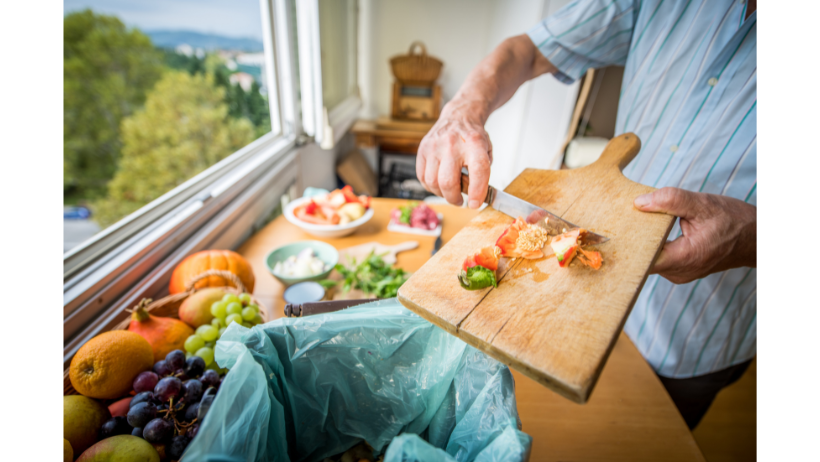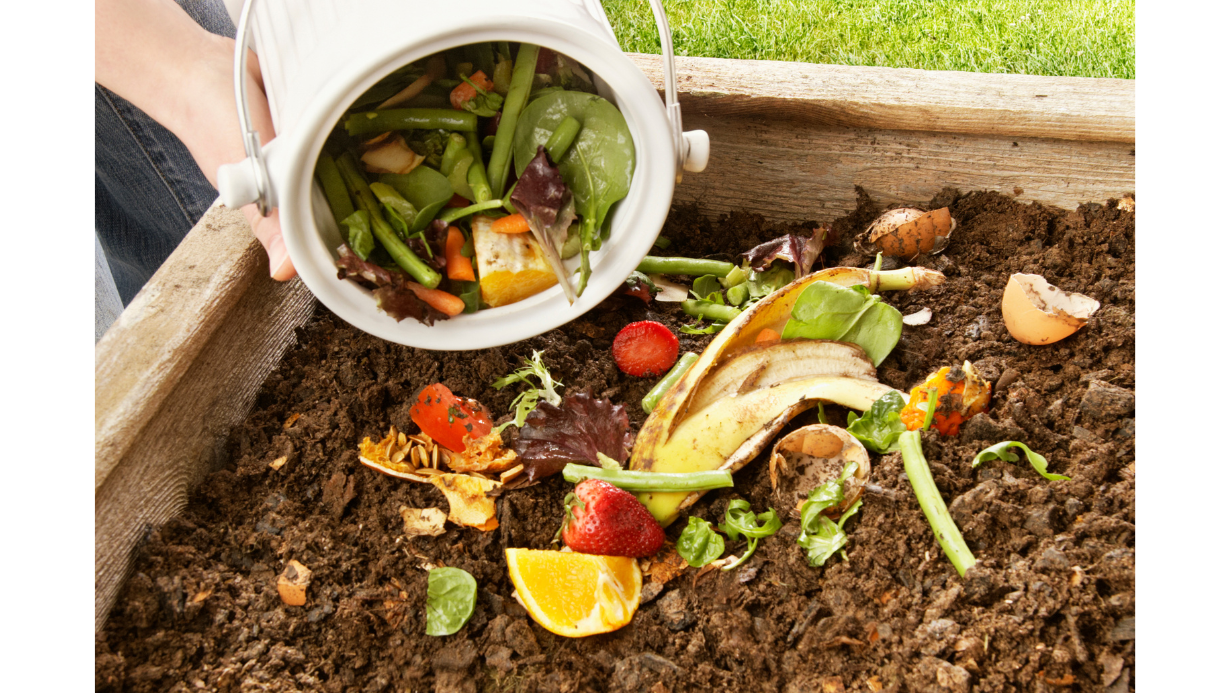
Composting is an easy and effective way to reduce household waste and create nutrient-rich soil for your garden. With just a few simple steps, you can start composting both inside and outside your home. Here are some tips to get you started:
Composting Inside:

- Choose a container: You can use a simple plastic bin or purchase a special compost bin designed for indoor use. Make sure the container has a tight-fitting lid to reduce odors. At my house, I use a medium-sized glass jar with a screw-on lid. I keep it right on my countertop next to my sink where we often prep our food. This makes it easy and convenient to throw all my scraps into it. Once it gets full I just take it to my outside compost pile.
- Add organic materials: Start by adding food scraps like fruit and vegetable peels, coffee grounds, and eggshells. Avoid adding meat, dairy, or oily foods, which can attract pests. If you are like me I go through a lot of coffee and eggs at my house so this is a big base for my compost. Lately, I have been keeping my eggshells separate to give to my chickens. I crush them up and put them in a separate bowl in their coop for added calcium to their diet.
- Add dry materials: To balance out the moisture from the food scraps, add dry materials like shredded newspaper, leaves, or sawdust. *Fun Fact – Bank statements, bills, and other important documents are great to shred and add to the compost to ensure identity protection while building your soil.*
- Mix and turn: Once a week, stir the contents of the bin with a wooden spoon or compost turner to aerate the mixture and help it break down more quickly or take it to your outdoor compost pile.
- Harvest the compost: After a few months, your compost will be ready to use! Simply sift out any large pieces and use the compost in your garden.
Composting Outside:

- Choose a location: Select a spot in your yard that gets partial sun and is easily accessible. Avoid placing your bin in a low-lying area that can become waterlogged.
- Add organic materials: Follow the same steps for adding organic materials as you would for an indoor bin. You can also add your grass and garden clippings, and your leaves from the fall along with cardboard, newspaper, etc.
- Mix and turn: Use a garden fork to turn the compost pile every few weeks to aerate the mixture and help it break down more quickly.
- Add water: If your compost pile is looking dry, add a few gallons of water to keep the mixture moist.
- Harvest the compost: After a few months, your compost will be ready to use! Simply sift out any large pieces and use the compost in your garden.
By following these simple steps, you can create nutrient-rich soil for your garden, along with sequestering carbon and reducing your household waste.
Composting is one of my favorite activities because it’s a simple and effective way to find a use for household waste. Rather than throwing away scraps of food and yard waste, I’m able to turn them into a nutrient-rich soil amendment for my garden. The process of composting creates a balanced blend of carbon and nitrogen that’s perfect for giving my plants the nutrients they need to thrive. Plus, by using my own compost, I know that I’m not introducing any harmful chemicals or pesticides to my garden. There’s something truly satisfying about knowing that I’m creating my own organic food in a sustainable way and that I’m doing my part to reduce waste and help the environment.
Happy composting!
 Facebook
Facebook
 X
X
 Pinterest
Pinterest
 Copy Link
Copy Link


